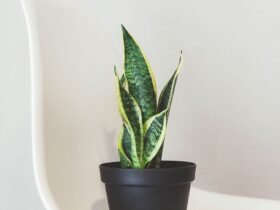If you enthusiastically clicked on this article, you’re probably familiar with the usual home remedies for mosquito bites, like anti-itch creams and DIY baking soda paste. But a bunch of people on TikTok (including derms) are recommending a more surprising solution to those itchy, incredibly annoying bumps: pimple patches.
These little skin stickers are just mini hydrocolloid bandages, which work by absorbing drainage from leaky lesions (like blisters and juicy whiteheads) as they heal. And because mosquito bites—which are your body’s reaction to the bug’s saliva—are essentially fluid-filled wounds, it stands to reason that zit patches could similarly flatten and treat these spots.
There isn’t specific research to support this theory (though plenty of satisfying—and gross—TikTok videos make convincing cases). So we asked Fatima Fahs, MD, a board-certified dermatologist in West Bloomfield, Michigan, to vet this clever hack.
Can pimple patches heal your torturous mosquito bites?
After a sneaky mosquito feeds on your arm, leg, neck…wherever, your immune system releases histamines in response to the little pest’s saliva, Dr. Fahs tells SELF. This triggers inflammation and causes those puffy, itchy bumps we all loathe—which is where hydrocolloid bandages may come in handy.
“Pimple patches work by drawing out moisture from the skin’s pores and reducing inflammation and swelling produced by the immune system,” Dr. Fahs explains, and this process should significantly flatten (and heal) a mosquito bite within 24 hours, she says. Another major benefit: An acne patch will cover your bug bump, creating a physical barrier to prevent you from scratching and picking, both of which can slow down healing and even lead to infection.
As miraculous as this trick may sound, however, don’t expect your bite to magically vanish overnight—no matter what enthusiastic TikTokers may claim. Remember: That inflamed lump is your body’s physiological reaction to a mosquito’s saliva, and most topical treatments (including hydrocolloid stickers) won’t address that internal immune response. Also, Dr. Fahs notes that while a zit patch can speed up the healing process and make your bite go away faster, it probably won’t stop the itching completely since hydrocolloid doesn’t have anti-itch properties. (For that, you’ll have better luck with over-the-counter hydrocortisone cream or calamine lotion, Dr. Fahs says.)
Now that you have a more realistic idea of what pimple stickers can (and can’t) do, here’s how to try this simple hack the next time a little bloodsucker gets you: Dr. Fahs recommends applying a plain hydrocolloid patch to the affected area (on clean and dry skin) as soon as you notice symptoms and leaving it on overnight (for up to 12 hours—any longer can potentially dry out or irritate your skin). “Also, avoid using patches with strong acne-fighting ingredients like benzoyl peroxide and salicylic acid, which can aggravate an already inflamed and sensitive spot,” she adds. Instead, go for plain hydrocolloid or look for soothing ingredients like aloe and chamomile. A few options we like:
One more (important) thing to note: You shouldn’t rely on a pimple patch if you’re experiencing more severe mosquito bite symptoms, such as hives, blistering, or a low-grade fever. In these cases, it’s best to see a doctor ASAP, who can prescribe stronger treatments, like antibiotics, and rule out anything more serious, like life-threatening anaphylaxis.
Generally, though, there’s no harm in giving this easy-enough remedy a shot. But just to play it safe, patch test on one bump first—watching out for signs of an allergic reaction like more swelling, itching, or a burning sensation—before slapping zit stickers all over your legs, arms, or anywhere else those little jerks attacked you.
Related:
















Leave a Reply